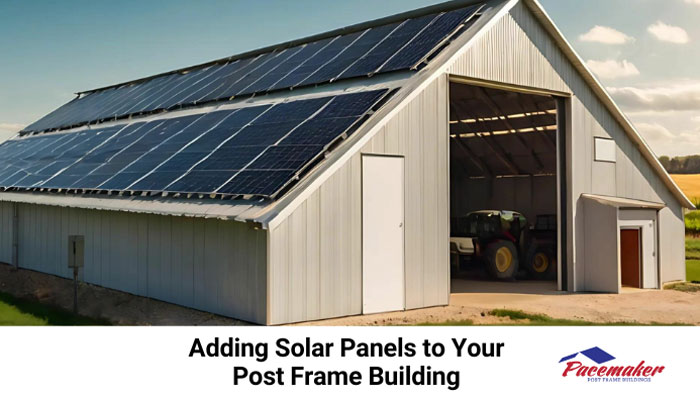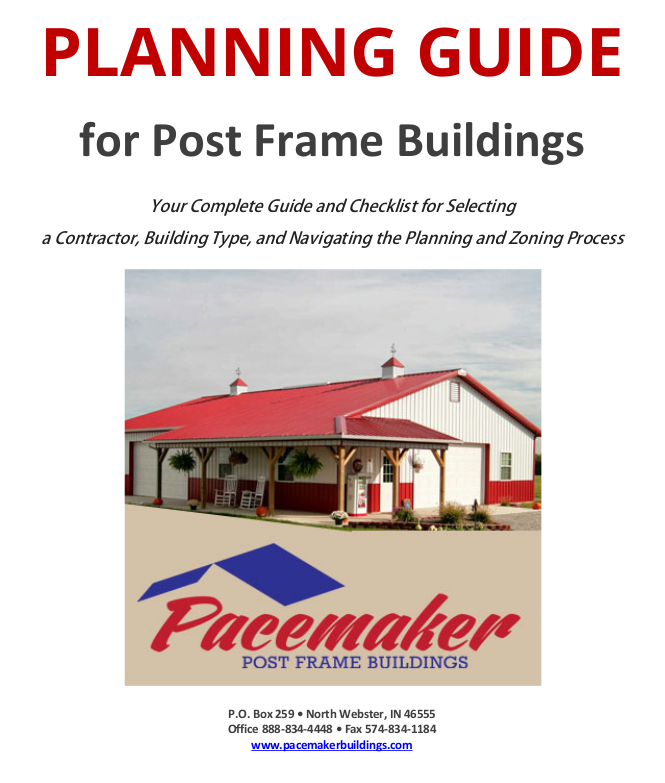
Maximizing your energy efficiency by utilizing solar panels is a worthy, long-term investment for your post frame building. Photovoltaic (PVC) cells in solar panels absorb the sun’s energy and convert it into electrical energy that powers your post frame building, home, or power grid.
Solar power is environmentally sensible and can be a low-cost alternative in the long run. This makes solar panels a practical solution in many applications, from commercial to residential. Furthermore, solar panels can provide the power your facility needs.
While the process is often straightforward, there are certain factors to address when you consider adding solar panels to your building. Your post frame expert and chosen solar power supplier will also provide substantial help as you proceed through the planning and execution phases.
Let’s look at the potential factors that can impact your solar panel installation.
1. Location of Your Post Frame Building
Solar panels will benefit from exposure to the greatest amount of direct sunlight. Therefore, the first consideration should be the location of your post frame building.
Aim to have your building facing south. This is the direction from which the sun’s rays will be most prevalent. The more sunlight the panels receive, the more energy they will generate. East-facing roofs can also be an acceptable option. However, south-facing provides the most direct light during the daytime, all year round.
2. Roof Condition
Never install new solar panels on a roof that may need to be replaced in the next few years. If the roof is relatively new and in great shape, the installation of the solar panels is perfect.
Your post frame expert can advise if your roof is sound and whether the roof can manage the additional weight of the solar panels. The best time to install the panels, naturally, is at the time of construction as the additional weight will be included in the calculations.
With an older structure, be sure to consider the roof’s condition and make sure the structure is sufficient to manage the additional weight. A structural engineer will be able to assess your building and determine if the trusses can hold the solar panels.
3. Research the Cost and Complexity of Solar Panel Installation
Be aware that the break-even point for adding solar panels can differ significantly. Before beginning, you should understand all the costs involved. This includes the price of the panels, any necessary assessments, and the labor to install the system.
You could potentially use the solar panels to supply power to a nearby home or building as well. This can extend the savings and reduce overhead costs moving forward. Shop carefully for solar panels. Always look for suppliers with a proven record and plenty of positive assessments from others in a similar situation.
Become Familiar with All Local Codes and Zoning Laws for Solar Panels
The most important first step is to contact your local government authority. This will help you understand any limitations on adding solar power to your post frame building. Check on things like restrictions, special permits, and zoning restrictions that may limit the size, placement, and orientation of solar panels.
Tax incentives also can be a significant reason for adding solar power. Many local governments encourage the inclusion of solar energy, so make sure you apply for these benefits.
Contact Pacemaker Post Frame Buildings
Pacemaker Post Frame Buildings has been a long time supplier and builder of post frame buildings in Northern Indiana, Northwest Ohio, and Southwest Michigan for four decades. Their success is well documented, and the results of their work can be viewed in the photo gallery on their website.
Before installing solar panels to your new or existing post frame structure, make sure you consult with one of their experts located in North Webster, Indiana. These professionals can advise whether solar power is recommended and how to proceed.
You can arrange a meeting with a Pacemaker Post Frame professional by completing the simple Contact Us Form on the website or calling a Pacemaker specialist at 888-834-4448.
